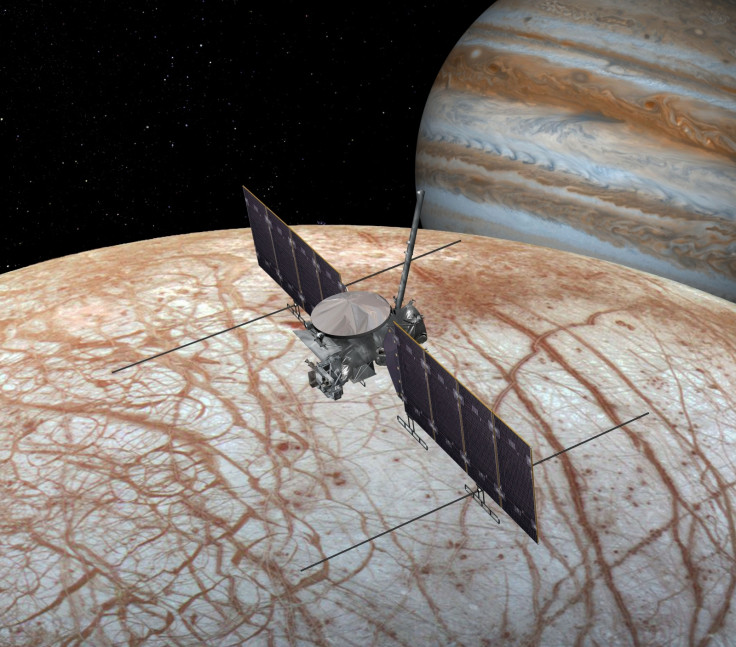Nasa Europa mission: Agency seeks to balance research objectives and cost
The mission is reportedly scheduled to be launched no later than 2025.
Nasa's mission to Jupiter's moon Europa might contain less scientific instruments on board due to cost concerns.
There has been an increased interest in Europa as one of the places to hunt for alien life after Nasa discovered water vapour plumes on its surface.
After a meeting of the Outer Planets Assessment Group (OPAG) earlier this month, it was reported that the design of the lander mission is still under evaluation and that there has to be a balance between the cost and research.
After this, calls for scientific instruments have been apparently postponed, reports space.com.
Curt Niebur, a program scientist in the planetary science division at Nasa Headquarters said: "As a result of that mission concept review, what we want to do is essentially continue exploring the different options we have for a Europa lander mission,"
"We want to continue balancing the trade amongst risk, cost and science return," he added.
The mission as of now is reportedly scheduled to be launched "no later than" 2025, that means it would reach the Jupiter system at around 2030, touching down on Europa by 2031.
Like most large spacecraft thus far sent to the outer Solar System, it is reported that Nasa has to deal with balancing onboard instruments with propellant, or fuel. The Europa lander is estimated to have a mass of 16.6 tons.

Nasa formed a Science Definition Team (SDT) earlier this year to charter the goals of this mission. The SDT had to work with 42.5 kg of payload accommodation and create goals that could be accomplished within a suite of five instruments, notes the report. Another restriction that the team faced was the limited, 20-day battery backup that the instruments will have to function.
While the report put together by SDT was a good place to start, Niebur said "accomplishing everything in the SDT report is a very expensive mission. What we'd like to see are some less expensive options."
"I firmly believe that you can't make substantial cost reductions and maintain the full science return of this mission," he said.
He made it clear that Nasa is willing to sacrifice some science in favour of cost. "If you really want to see a more streamlined mission concept, you're going to have to be willing to give up some science. So, yes, science is on the table."
While there is no actual estimate that was released by Nasa or the OPAG, the actual cost of a lander mission is expected to go to several billion dollars, reports space.com. The report goes on to say that this is why Nasa is yet to issue an announcement of opportunity (AO) for instruments that are likely to make it on the lander.
© Copyright IBTimes 2024. All rights reserved.






